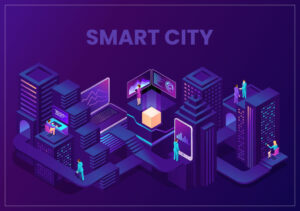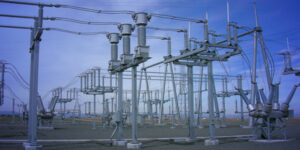What is Smart City?
A smart city is one that uses various information technologies and innovations to improve the lives of its citizens by improving resource management, improving overall infrastructure and service quality, and reducing waste, energy consumption, and pollution. Intelligent Traffic Monitoring Systems, real-time surveillance, smart street lighting, a centralised command and control centre, real-time environmental monitoring, and data display for public awareness are all required in a smart city. With a market value of around $400 billion in 2019, the global smart cities market is expected to exceed $1 trillion by 2030.
Mechanism behind Smart City
The Internet of Things (IoT) is a key driver for smart cities, as machines, vehicles, systems, and devices must communicate with one another, share and gather data, and automation is prevalent. Communications, energy, and transportation are three areas that need more attention, funding, and R&D to provide efficient solutions to the city and improve citizens’ welfare. Real-time data collection from various systems, as well as their aggregation and unified analysis, can assist the city in implementing smart city infrastructure.
India’s initiative towards Smart City
The Government of India launched the Smart City Mission on June 25, 2015. The mission’s primary goal is to promote sustainable and inclusive cities that provide good infrastructure and a decent quality of life for their citizens. The government has allocated a total of INR 191,000 crores for the purpose. By March 2022, a total of 3577 projects had been completed out of 6939 projects, using a total of 60,073 crore out of a total tendered amount. A smart city is a city that embodies the four pillars of comprehensive development: institutional, physical, social, and economic infrastructure.
The Fallback
There is already so much pressure on Government agencies to deliver the Smart City Projects on time. The pressure to deliver quick results can have disastrous consequences. A smart city infrastructure is a multi-decade project. It coexists with urban transportation networks, energy distribution systems, and sewers. Many smart city projects have fallen through in recent years. According to Ministry of Urban Development, a single-vendor, single-use-case strategy failed in this case. This was due to dubious procurement processes and the use of a single-vendor selection.
Implementation Strategy
The main implementation strategy for the smart city project is to develop areas gradually. The first is retrofitting, which involves adding new technology or features to an existing system in order to improve its efficiency. Then comes redevelopment, in which an infrastructure is rebuilt with better design and thought. Finally, greenfield is created by planting more trees in the spaces between the concrete jungle.
Public-Private Partnership
Many technology and IoT companies have expressed interest in participating in the smart city initiative. In 2014, XENIUS successfully installed smart street lights and implemented a smart city model at Mahindra World City Jaipur. CRISIL, KPMG, McKinsey, and Mott Macdonald are among the 37 consulting firms tasked with developing a strategy for the proposed 100 smart cities. The Government’s Smart Cities Mission is an innovative and new initiative to drive economic growth and improve people’s quality of life by enabling local development and harnessing technology to create smart outcomes for citizens.












